Social weavers are small birds that live in communes, building joint nests for up to 300 pairs. The nests up can be as large as 25 feet wide, 5 feet high, weighing over one ton, and with an individual room for every couple. One known colony is over 100 years old.
Sometimes the trees they are in collapse and die from the weight.
Thanks to telephone poles, and power lines, the social weavers are expanding their range.
Twigs, coarse grass and straw are the main building materials. Nest interiors are lined with fur, feathers and soft plants. They offer a stable micro climate for hot days and cold nights in the Kalahari desert. The birds use them for sleeping as well as breeding.
They enter from the bottom.
Another sub-species of the weaver bird weaves intricate individual nests.
The best weaver birds have the ability to tie dozens of different shaped knots and loops for which they use their feet as well as beaks.
Photo by: Phil Strange
Designs and neatness of construction vary widely among the different species of weaver birds. Some are simple and scruffy, with a small tube and roundish nests. Other species build much more elaborate nests, with the strands of grass carefully interwoven to form a well-defined structure. The main part is a hollow sphere, lined with nesting material, accessed through a long tube which has a small entrance hole. The nests are usually tough and well-secured so a high wind will not blow them down.
Above photos by: Edgar Thissen
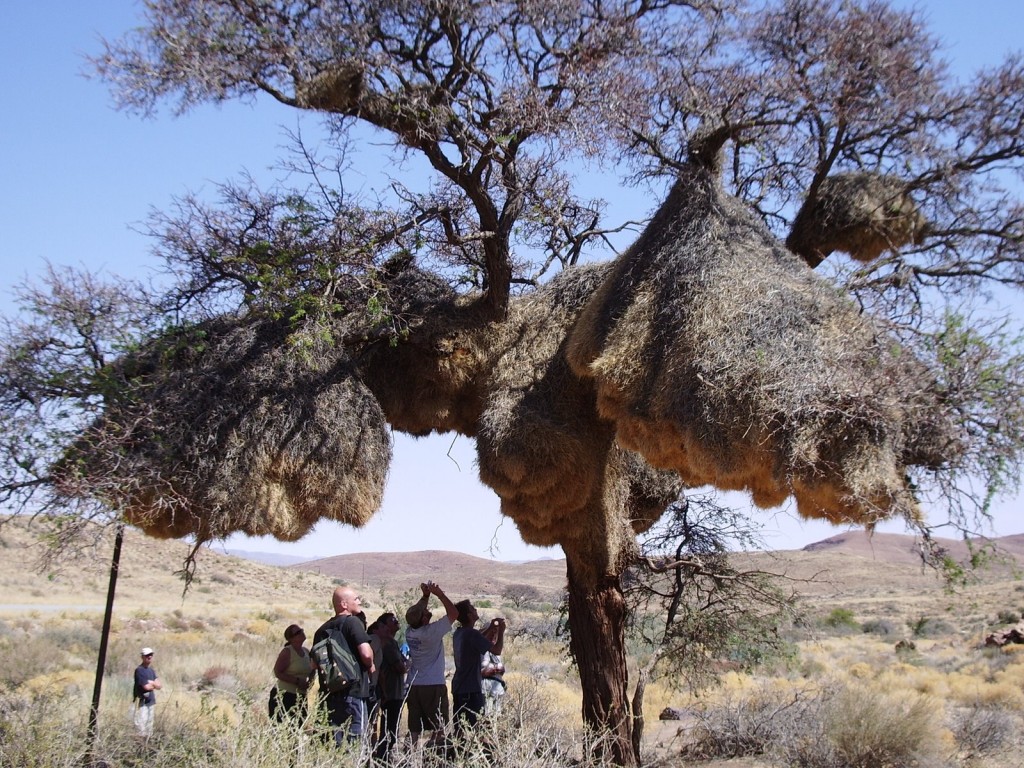
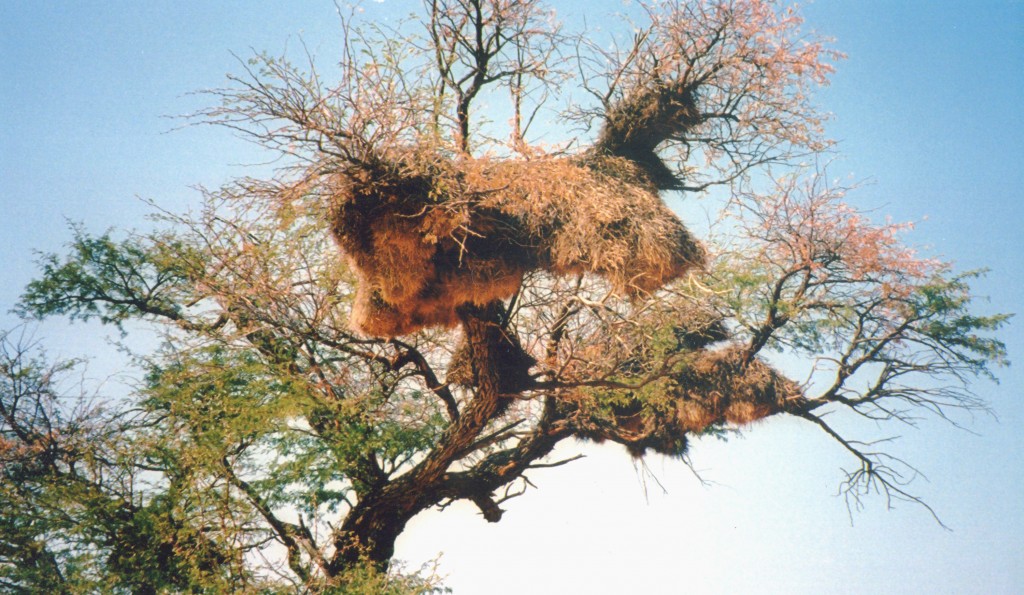
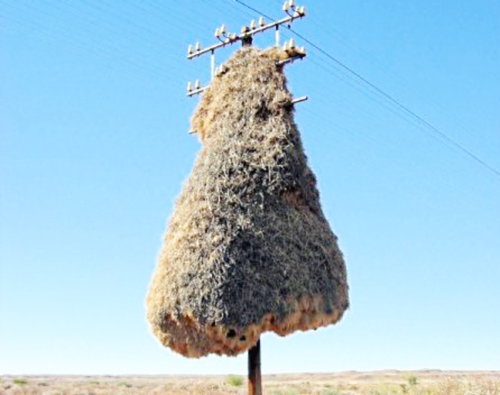
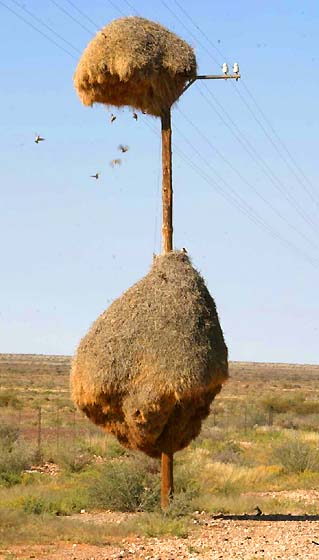
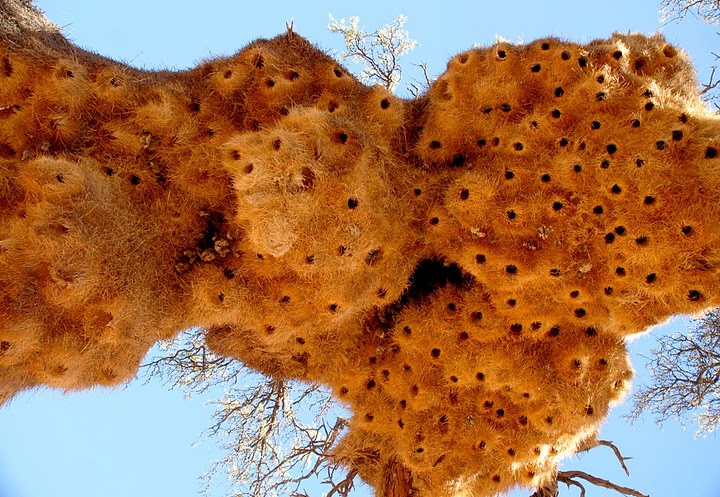
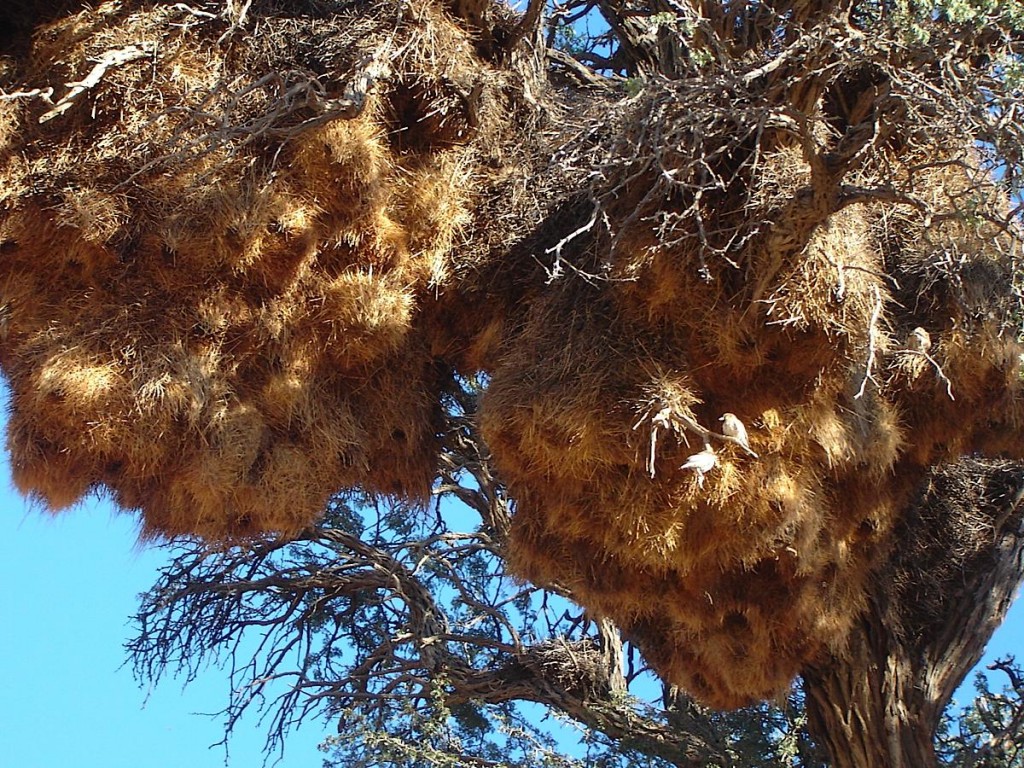
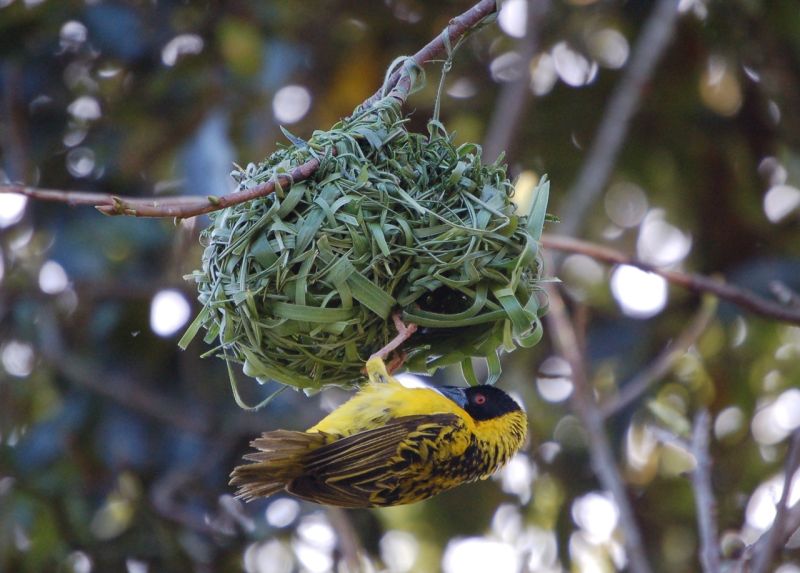
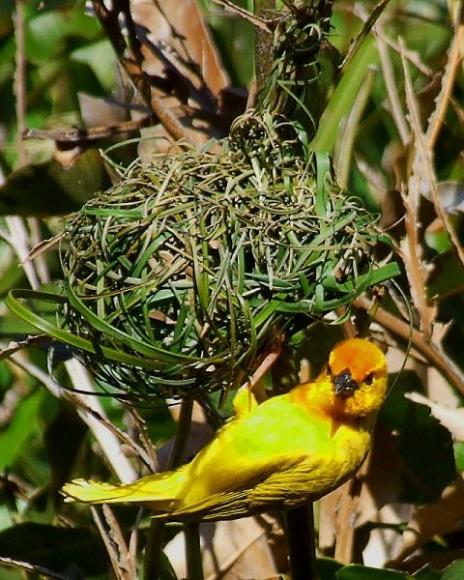
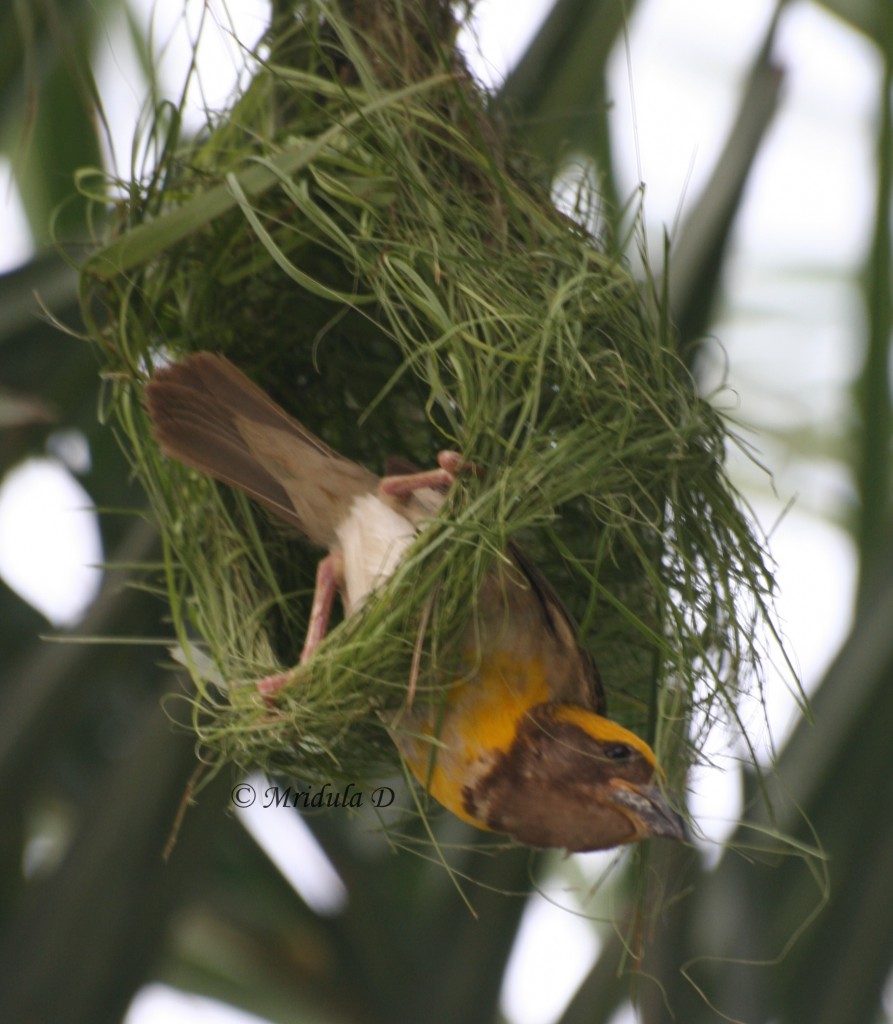
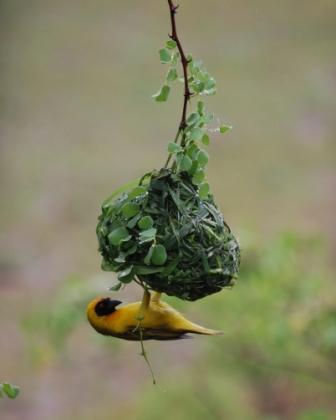
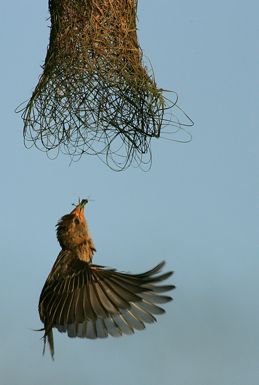
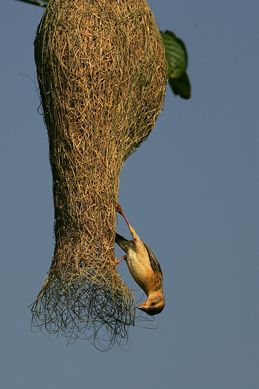
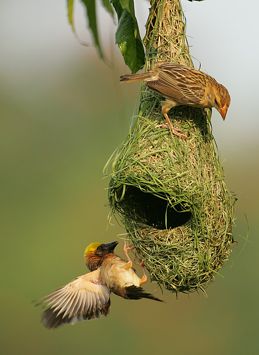
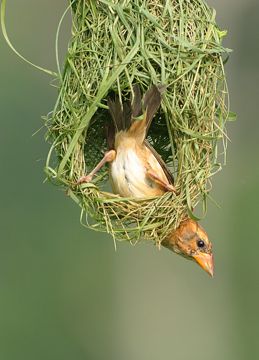
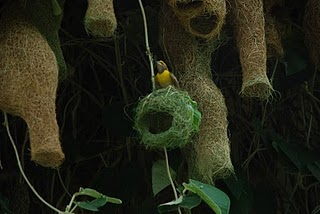
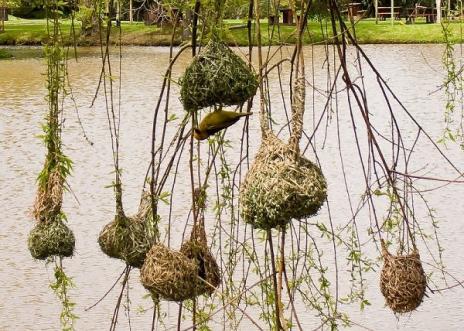
These are beautiful and adorable!
Pingback: Nerds Next Door
Great post. Informative.
Lovely article. I used one of your images in a blog post, with attribution.
http://brucine.blogspot.com/2014/08/a-tree-from-internet.html
I hope that’s alright. Please let me know if you’d rather I take it down.
x bruce
Thank you for this wonderful gift of bird photography!!!
The nests are incredible!!!
These Birds just take my breath away ..I can look at bird photography
all day thanks.. I hope to see many more .
If you want to see the US equivelant of weaver birds, check out the huge communal nests made by monk parakeets in Westport, Ct, in and around the Compo Beach area. They are built in tree canopies on private properties, but are readily visible. Each pair has its own compartment. The birds are not native to the US, but somehow showed up in S New England and NY, and have thrived. When I was there, 4 devoted gentlemen showed up with a station wagon full of birdseed, and fed the parakeets at a local park.
¿Cómo se llama esta ave?
Gracias